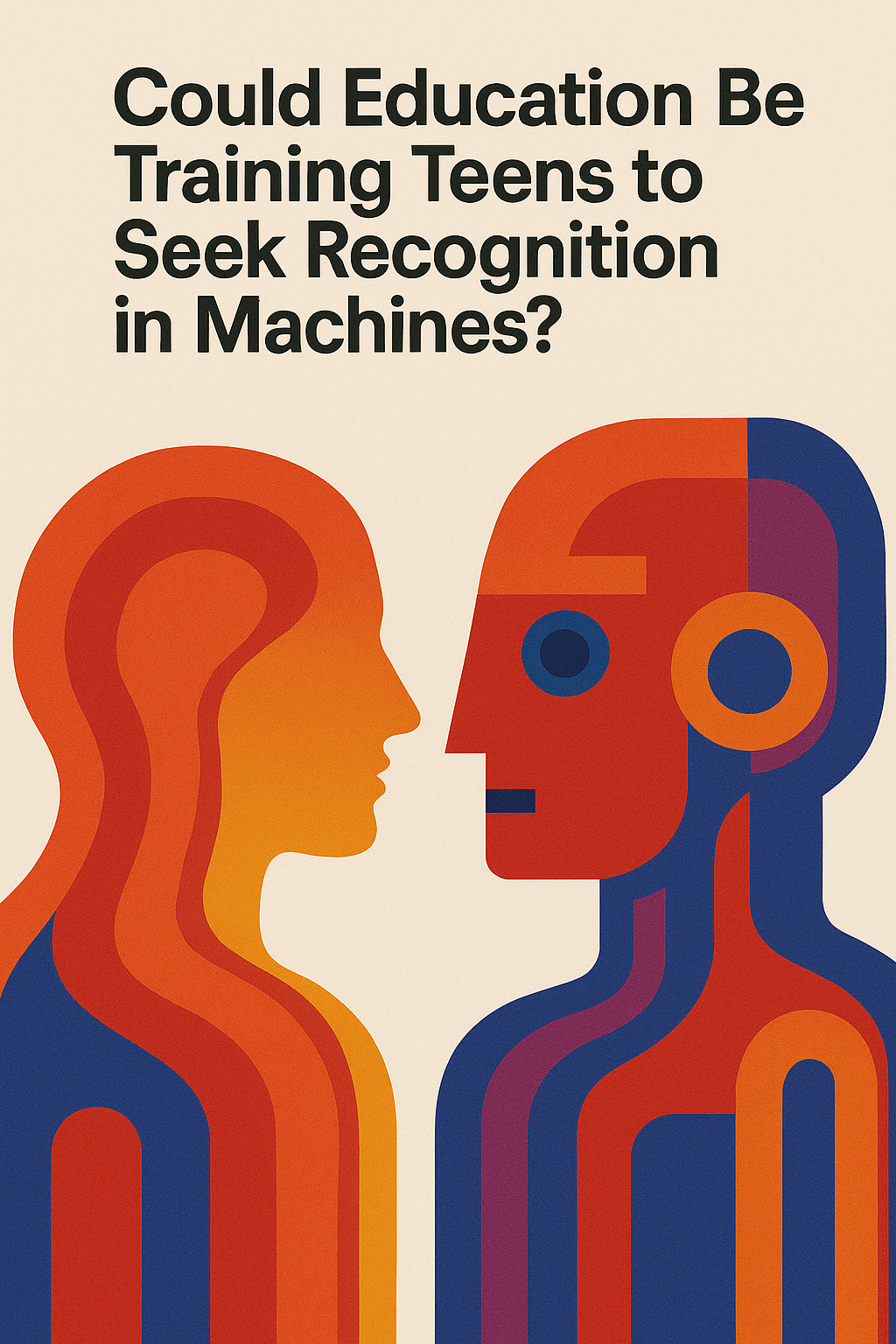Could Education Be Training Teens to Seek Recognition in Machines?

By J. Owen Matson
By this point—and there’s no need to rehearse the headlines—you’ve probably already seen the accounts, half-astonished and half-resigned, of teenagers spilling their secrets into the input box of a language model, lingering in late-night chat sessions that stretch past homework and loneliness and the vague ambient need to be noticed, naming ChatGPT as a companion, a confidant, a strangely attentive echo chamber that feels—however mechanically—like someone or something that hears them in ways the real people in their lives no longer quite manage to do.
This is usually described as a breakdown, or at least a breach—some collapse of social fabric or some mistake in interpretation, as if they’ve misread the signals and are trying to make eye contact with the blinking cursor itself—but the more uncomfortable possibility is that they haven’t misunderstood anything at all. They’ve simply learned the pattern too well. They’re reenacting a logic they’ve already internalized, one they didn’t invent but absorbed, somewhere between the daily routines of school and the recursive scroll of their feeds, where attention functions as reward, and reward becomes indistinguishable from recognition, and recognition feels—if only for a second—like safety.
School, in this regard, has always been more than its declared purpose. Its rituals don’t merely deliver knowledge or enforce behavioral norms—they create, over time, an entire semiotic infrastructure for how one becomes visible to others and what that visibility implies. There’s no syllabus on recognition, but the message saturates every part of the system: to be good is to be seen, to be seen is to be known, to be known is to matter. And if there’s anything school teaches with more consistency than long division or the parts of a cell, it’s how legibility functions as a kind of currency—one that buys a conditional form of inclusion and charges interest on whatever part of yourself you cannot make intelligible within its terms.
This instruction is not confined to the classroom. The digital environment into which students are now born—and there’s no clean line here between what counts as school and what counts as social—is structured around a similar logic of conditional appearance, though with metrics that shimmer with more seductive clarity. Likes, shares, algorithmic virality—these are just the visible tip of a much deeper architecture in which attention is both extracted and gamified, in which the sense of being real is yoked to the promise of being seen, and in which failure to appear, or to appear correctly, can feel indistinguishable from disappearance.
My point here is not whether recognition is real or fake or earned or coerced—it’s that the desire for it has been trained, and that training operates beneath the level of declared intention. The scholarly debates around recognition tend to polarize between those who treat it as an existential need and those who deconstruct it as a structural illusion, but what tends to get missed is the institutional process through which that need is cultivated in the first place. Whether the desire to be known arises from some primordial self or is stitched together from social cues and feedback loops is almost beside the point for those who experience it as a fact of survival within systems designed to reward only what can be made legible. And once legibility becomes the gatekeeper of care, care becomes indistinguishable from performance, and performance becomes a kind of labor—emotional, affective, continuous—offered in exchange for the tentative promise of being acknowledged.
Which brings us back to the question of why an AI like ChatGPT might feel, under certain conditions and to certain users, like a better listener than anyone else in their life. It’s not because the AI sees them—it doesn’t, it can’t—but because it mirrors back the exact structures through which they’ve already been taught to interpret what seeing looks like. Responsiveness becomes reassurance. Textual attentiveness becomes emotional safety. The output doesn’t need to be real because the performance of recognition, even when synthetically generated, is enough to summon the affective memory of what it once meant to be regarded.
So the relevant question may be what kind of system generates this pattern of attachment to begin with. And whether education—as a field, as an experience, as a set of architectures—can be imagined beyond its quiet dependence on recognition as its invisible engine.
After all, a pedagogy that seeks only to widen access to recognition risks mistaking the symptom for the purpose. And a pedagogy that begins again, from somewhere else entirely—from relationality, from attunement, from something still unnamed—would have to unlearn the need it once mistook for care, and ask, without any guarantee of answer, what forms of learning might emerge in the absence of the desire to be seen.